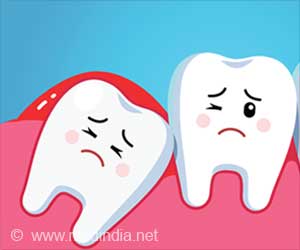The percentage of Americans with untreated cavities began rising this decade, reversing a half-century trend of improvement in dental health.
As healthcare costs hit the roof in the US, dental health is becoming a major casualty.
The percentage of Americans with untreated cavities began rising this decade, reversing a half-century trend of improvement in dental health.The cavities remain untreated because people just can’t afford a visit to a dentist. More than 100 million people lack dental insurance in that country.
Previously unreleased figures from the Centres for Disease Control and Prevention show that in 2003 and 2004, the most recent years with data available, 27 percent of children and 29 percent of adults had cavities going untreated. The level of untreated decay was the highest since the late 1980s and significantly higher than that found in a survey from 1999 to 2002.
Despite the rise in dental problems, state boards of dentists and the American Dental Association (ADA), the main lobbying group for dentists, have fought efforts to use dental hygienists and other non-dentists to provide basic care to people who do not have access to dentists.
For middle-class and wealthy Americans, straight white teeth are still a virtual birthright. And dentists say that a majority of people in this country receive high-quality care.
But many poor and lower-middle-class families do not receive adequate care, in part because most dentists want customers who can pay cash or have private insurance, and they do not accept Medicaid patients.
Advertisement
In some cases, the results of poor dental have been deadly. A child in Mississippi and another in Maryland died this year from infections caused by decayed teeth.
Advertisement
“Most dentists consider themselves to be in the business of dentistry rather than the practice of dentistry,” said Dr. David A. Nash, a professor of pediatric dentistry at the University of Kentucky.
Dentists, of course, are no more obligated to serve the poor than are lawyers or accountants. But the issue from a public health standpoint, the critics say, is that even as so many patients go untreated, business is booming for most dentists. They are making more money while working shorter hours, on average, even as the nation’s number of dentists, per person, has declined.
Partly as a result, dental fees have risen much faster than inflation. In real dollars, the cost of the average dental procedure rose 25 percent from 1996 to 2004. The average American adult patient now spends roughly $600 annually on dental care, with insurance picking up about half the tab.
Dentists’ incomes have grown faster than that of the typical American and the incomes of medical doctors. Formerly poor relations to physicians, American dentists in general practice made an average salary of $185,000 in 2004, the most recent data available. That figure is similar to what non-specialist doctors make, but dentists work far fewer hours. Dental surgeons and orthodontists average more than $300,000 annually.
But despite the allure of rising salaries, the shortage of dentists will almost certainly worsen, because the nation has fewer dental schools and fewer dentists in training than a generation ago.
Even if more students wanted to enter the profession, states are not moving aggressively to expand dental schools or open new ones.
Dr. Kathleen Roth, president of the ADA, said that the association was working to increase Medicaid’s reimbursement rates to make it more cost-effective for dentists to treat low-income patients.
“Access to dental care, especially for children, has been a growing problem for 10 years,” Dr. Roth said. “State and federal programs have decreased the amount of dollars available.”
Besides calling for higher Medicaid reimbursement, Dr. Roth said, the association supports putting health aides with basic dental training into public schools. The aides would help get appointments for children who need them and teach children basic habits like brushing teeth.
With little dental care available for poor children, pediatricians are teaching themselves how to apply fluoride varnish on baby teeth, a simple procedure that can prevent cavities, said Dr. Amos S. Deinard, a pediatrician and associate professor at the University of Minnesota.
“The dentists don’t want to see these kids,” Dr. Deinard said.
Outside the United States, more than 50 countries, including some western European nations, now allow technicians called dental therapists to drill and fill cavities, usually in children.
Proponents of the therapists say their training is comparable to the practical training that dentists receive, but without the general medical training dentists get. Studies of the work performed by the therapists have concluded that it is comparable to, and in some cases better than, that of fully trained dentists.
Source-Medindia
GPL/C






